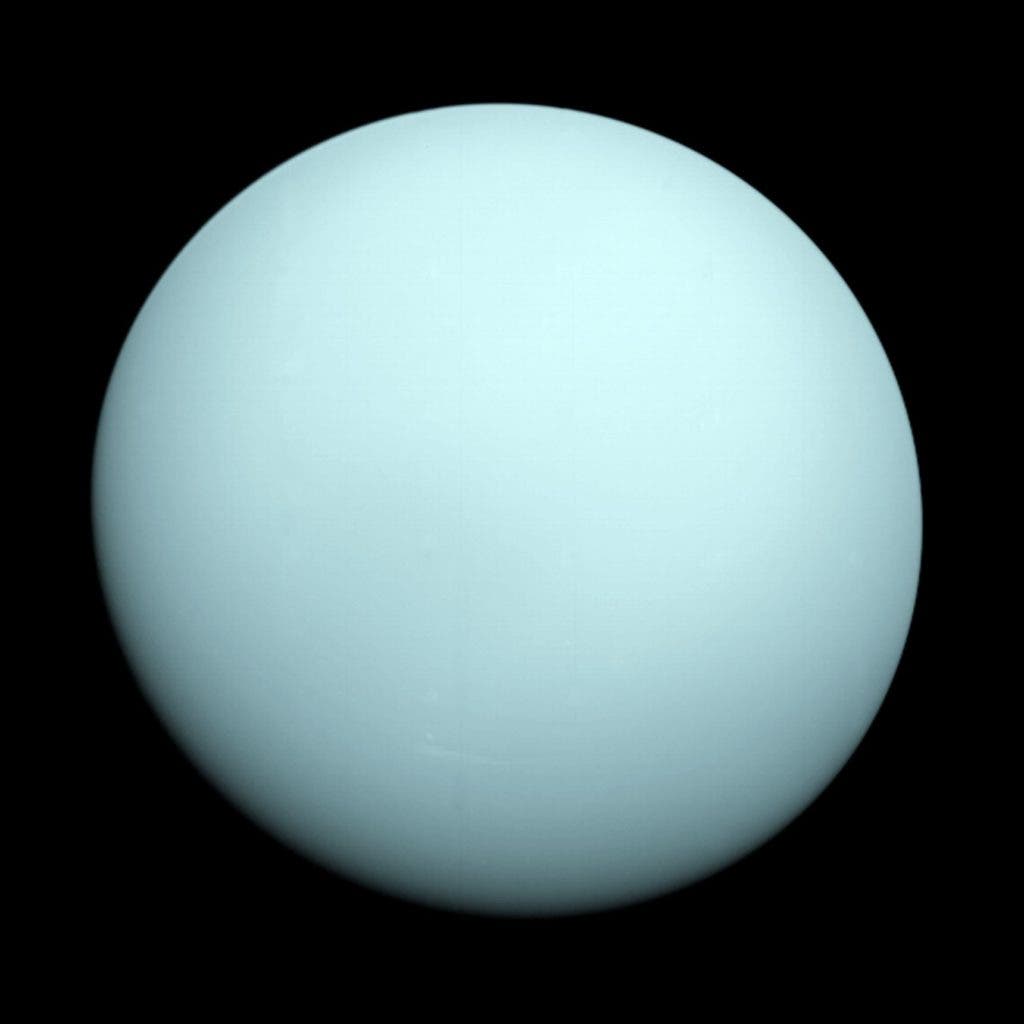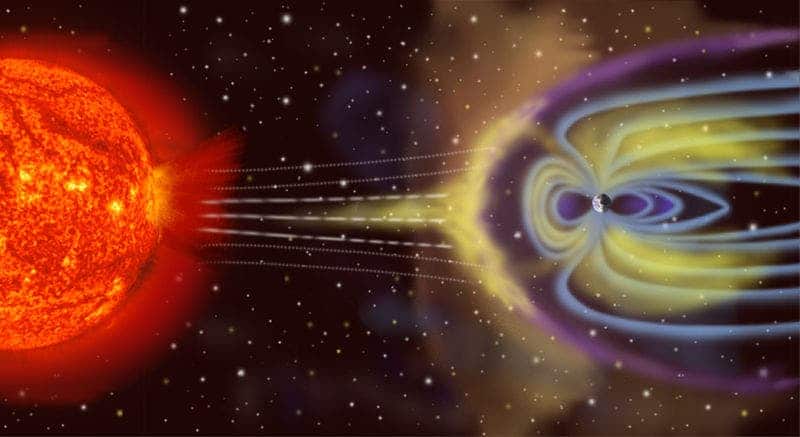The magnetosphere on Uranus is not in sync with the planet’s rotation, causing it to switch off sometimes.
Although it’s been 30 years since Voyager 2 sped past Uranus, we’re still analyzing the data and learning new things about the planet. This time, it’s about the planet’s magnetosphere.
A geometric nightmare
The magnetosphere is basically a region of space surrounding a planet (or any object), in which charged particles are controlled by that object’s magnetic field. In a planet like Earth, the magnetosphere is crucial because is mitigates or even blocks the negative effects of cosmic radiation. But on Earth, the magnetic field is nearly perfectly aligned with the spin axis, meaning that the same alignment of Earth’s magnetosphere is always facing toward the sun. In turn, this means that the magnetic field threaded in the ever-present solar wind must change direction in order to reconfigure Earth’s field from closed to open. This frequently occurs with strong solar storms. But our planet is privileged, and not the same can be said about Uranus.
The gas giant spins on its side and has a lopsided magnetic field, tilted by 60 degrees. So the magnetic field also tumbles asymmetrically relative to the solar wind direction. Since Uranus spins quite quickly (taking 17.24 hours to complete a full rotation), this leads to a periodic open-close-open-close scenario as it tumbles through the solar wind, leaving wide gaps open — like chinks in the planet’s magnetic defense. If that’s hard to picture… well, it is.
“Uranus is a geometric nightmare,” said Carol Paty, the Georgia Tech associate professor who co-authored the study. “The magnetic field tumbles very fast, like a child cartwheeling down a hill head over heels. When the magnetized solar wind meets this tumbling field in the right way, it can reconnect and Uranus’ magnetosphere goes from open to closed to open on a daily basis.”
At this moment, we don’t know if Uranus is a typical case and the Earth is the odd one out, if it’s the other way around, or if there’s some innate characteristic of the planets that determine how the magnetosphere behaves. Understanding Uranus might serve as a stepping stone to understanding other planets outside our solar system — but unfortunately, the Voyager data is all we have.
“The majority of exoplanets that have been discovered appear to also be ice giants in size,” said Xin Cao, the Georgia Tech Ph.D. candidate in earth and atmospheric sciences who led the study. “Perhaps what we see on Uranus and Neptune is the norm for planets: very unique magnetospheres and less-aligned magnetic fields. Understanding how these complex magnetospheres shield exoplanets from stellar radiation is of key importance for studying the habitability of these newly discovered worlds.”
Journal Reference: Xin Cao, Carol Paty — Diurnal and seasonal variability of Uranus’s magnetosphere. DOI: 10.1002/2017JA024063.











